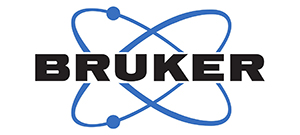Biophysical characterisation of binary and ternary drug-target complexes using the BRUKER SPR-32 PRO platform
29 November 2023
Shares
- Like
- Digg
- Del
- Tumblr
- VKontakte
- Buffer
- Love This
- Odnoklassniki
- Meneame
- Blogger
- Amazon
- Yahoo Mail
- Gmail
- AOL
- Newsvine
- HackerNews
- Evernote
- MySpace
- Mail.ru
- Viadeo
- Line
- Comments
- Yummly
- SMS
- Viber
- Telegram
- Subscribe
- Skype
- Facebook Messenger
- Kakao
- LiveJournal
- Yammer
- Edgar
- Fintel
- Mix
- Instapaper
- Copy Link
Gain comprehensive insights into screening potential drugs, manipulating drug targets at the molecular level and employing techniques like SPR and X-ray crystallography for studying molecular interactions.
Watch this webinar for free
Gaining knowledge about the molecular mode of target modulation and exploring how compound properties translate into cellular, or even in vivo efficacy of drug candidates are the overarching objectives of many pre-clinical research labs. In-depth characterization of the interaction of screening hits with target protein(s), in respect of eg, activity, affinity, binding kinetics and -thermodynamics, as well as their ability to modulate protein conformations and dynamics, contributes significantly to the process of diversifying early hit matter and the optimization of drug-candidates in pre-clinical research programs.
The modulation of the function of drug-targets with RNA or DNA as substrates, such as polymerases, helicases or nucleases, as well as receptors and enzymes playing key roles in cellular signalling pathways is of high interest for the pharmaceutical industry. The interplay of molecular interaction methods, such as SPR and X-ray crystallography, will be presented to profile screening hits and support mode of target modulation studies. Beside classical binary interaction studies a focus will be put on ternary complex formation studies.
Key Takeaways
- Support of Hit ID and Hit characterisation in early drug discovery by biophysical methods
- Case studies on assay development for binary and ternary complex formation assays
- Bruker SPR-32 PRO Platform applications to obtain insights on binding affinities and binding kinetics for small (NCE) and large (NBE) binders
- SPR method development to support kinetic characterisation of recalcitrant drug targets directly from cellular extracts.
Daniel Schwarz, Lab Head Molecular Interactions, Merck Healthcare KGaA, Germany Daniel Schwarz earned his PhD from Goethe University Frankfurt/Main, Germany in Biophysical Chemistry for his work on the structural and functional characterization of membrane embedded proteins. In 2010 Daniel joined Merck Healthcare KGaA as a bench scientist in the department of Molecular Interactions and Biophysics. He currently holds a Principal Scientist position within the Discovery & Development Technology unit and leads a team in the department of Discovery Pharmacology. His actual Drug Discovery research concentrates on the characterization of molecular interactions by various biophysical methods in a cell free environment. It covers a broad range of activities: fragment screening, analysis of binding kinetics of small molecules as well as of biologics/ADCs and species/isoform selectivity of drug-target interactions. Since a few years ternary complex formation assays for the analysis of small molecules, inhibiting DNA or RNA modifying enzymes or triggering protein degradation, as well as various assay formats providing insights into the molecular mode of drug/target binding complement Daniels Discovery research activities. Pedro Sousa, Senior Scientist, IBET, Portugal Pedro Sousa holds a PhD in Biochemistry from Instituto de Tecnologia Química e Biológica (ITQB), NOVA University of Lisbon, for his work on the characterization of prokaryotic aerobic respiratory chain supercomplexes. He currently coordinates the Molecular Interactions Platform at the Structural Biology for Drug Discovery Unit at iBET. Current interests include the study of molecular interactions using a combination of different cutting edge biophysical methods such as Surface Plasmon Resonance or Differential Scanning Fluorimetry. This research is developed on the scope of the collaboration with Merck Healthcare KGaA and comprehends the analysis of analyte-ligand interactions in early drug discovery.
Is the webinar free? Yes – there is no charge to watch the webinar. How long will the webinar be? This webinar will last up to an hour. What do I need to watch this webinar? All you need is a computer with an internet connection. We recommend using headphones if possible if you’re in an office environment.SPEAKERS




FAQs
FAQs




